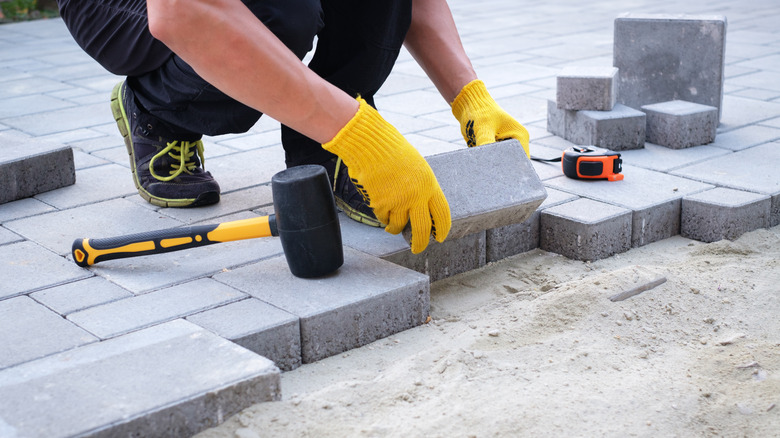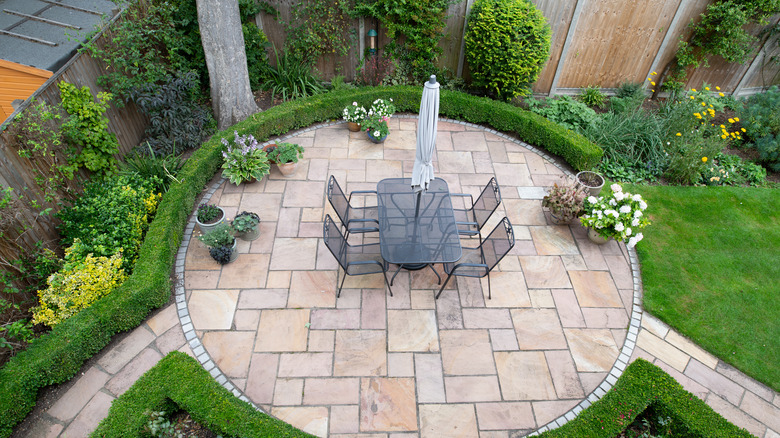What Is The Difference Between Paver Sand And Polymeric Sand?
When designing a patio or walkway, there are several things to consider beyond creating the shape and picking the location. Hunker explains that in order to lock in your pavers together, maintain the standard of your new patio or driveway, and hopefully help it to stand the test of time, it's become normal to put sand between your pavers. The publication writes that this can be so effective that a patio can last up to 20 to 30 years. But what's the difference between paver sand and polymeric sand?
SF Gate writes that during the installation of pavers, sand plays an integral role. First, you'll put a base layer down to improve drainage and create a solid foundation. Then, you'll also pack the gaps between the stones or bricks. This can mean filling the gaps and spreading sand on top, which prevents the pavers from shifting or moving over time.
It may seem like a simple task, but Western Interlock explains that people often make critical mistakes when laying the stones between their pavers, and it can cost them the look of their new patio or walkway in years to come. The publication adds that the initial bedding layer is incredibly important in ensuring that the pavers are steady, and people often use dirt as a base which shrinks by 30% when compact. While dirt isn't a good option for filling the gaps between your pavers, there are different materials that you can use.
The key differences between paver sand and polymeric sand
The sand material that you use between your pavers may feel like the most inconsequential part of your patio building process. However, different filling materials can give different results and protect your patio from dramatic changes in the weather. MJS Materials writes that typically paver sand is called leveling, all-purpose, or paving sand. It's made up of coarse grains and SF Gate writes that it's a preferable material for creating the thick bedding that you lay your pavers on top of. If you've used paving sand to fill the gaps, Perfect Paver Co recommends that you use a sealer on top to harden the surface and protect your new patio from stains.
However, you could use polymeric sand. Enviromom writes that, unlike other filling products, polymeric sand is a human-made product and is a combination of fine sand particles and binding agents such as silica. The publication explains that, when dry, polymeric sand is fine and powdery. However, as soon as it gets wet the additives activate and it turns into a hard, resistant gel. If you live in a particularly wet or windy place, polymeric sand could be a better fit for you. Techniseal also notes that polymeric sand is a pretty hostile environment for weeds and pests to thrive, and as it's a human-made product, you can get polymeric sand in a range of different colors to suit your new patio or walkway.

